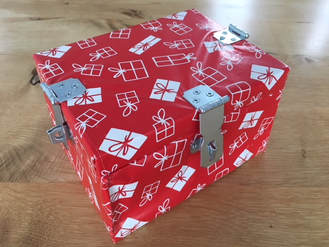
In past years, I’ve given homemade vanilla extract and ten-packs of soup and certificates for babysitting services. More recently, I’ve made personalized cryptic crosswords. (You can get my 2017 Christmas Cryptic here.)
 As kids, we were taught that the best Christmas gifts are made rather than bought, and although my lack of artistic ability should have put pain to that lesson long ago, I’ve never been able to shake it. In past years, I’ve given homemade vanilla extract and ten-packs of soup and certificates for babysitting services. More recently, I’ve made personalized cryptic crosswords. (You can get my 2017 Christmas Cryptic here.) But this year, fascinated by the concept, I decided to try my hand at something considerably more involved: a personalized escape room.
3 Comments
Merry Christmas! This year, I set myself a new challenge, which I'll blog about shortly, but I also made my usual Christmas cryptic crossword. I'd be thrilled if you gave it a shot! And as always, all feedback is very welcome.
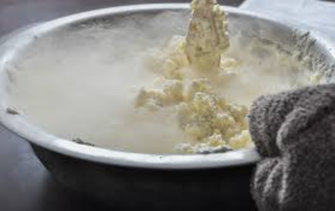 Ice cream made with liquid nitrogen Ice cream made with liquid nitrogen Saturday last, at the Concordia University Exposcience event, my three-year-old figured out how to accelerate and decelerate her heart rate on an ECG by imagining infuriating or calming things. She pulled all the organs out of a model of a human torso, then reassembled them. She controlled a robotic car and accepted a helium balloon and made fractal art but given that she is three, her favourite part was sampling the ice cream made from liquid nitrogen. Of all the demonstrations, my favourite was from the cool cats from the Concordia Chemistry Department. They held a seemingly blank piece of paper over a flame (careful not to burn it) until a hidden message appeared. 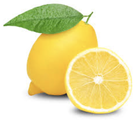 Lemon juice was the invisible ink in that case, and it gave me a geeky thrill to see the trick in action. But it still didn’t beat the subterfuge of another hidden message I saw recently. Vexed by President Trump’s failure to condemn rioting white supremacists in Charlottesville, Virginia, all thirteen members of the U.S. President’s Committee on the Arts & the Humanities (which included actor Kal Penn and Pulitzer prize-winning author Jhumpa Lahiri) resigned en masse in August. Their resignation letter was scathing and formidable. (You can read it here.) But that wasn’t all. Embedded inside the letter was a hidden message: the first letter of each of the paragraphs of the letter spelled the word “RESIST”. Maybe three days later, the Science Envoy for the Department of State, Daniel M. Kammen, also resigned. His letter contained the acrostic “IMPEACH”. Of all the riddles used in cryptics, I find initialism clues and hidden word clues the most delightful because of the way they manage to hide in plain sight, effectively using the words around them as camouflage. But acrostics, which are concealed messages made up of the first letter of every word, sentence or paragraph, can add another mind-blowing dimension. Read the source material and you get one message. But read the acrostic and it can give you a thought-provoking, even jarring new perspective. Examples of acrostics abound, from the Edgar Allan Poe poem (unimaginatively named “An Acrostic) that spells out "ELIZABETH" to the memo from the CEO of Sun Microsystems, which contained the acrostic "BEAT IBM". But the best example I’ve found to date of an acrostic that completely changes your take on things is in Vladimir Nabokov’s 1958 short story “The Vane Sisters”. The story, told in the first person, is about a man who has just learned that a former student with whom he had a brief relationship, Cynthia, has died. 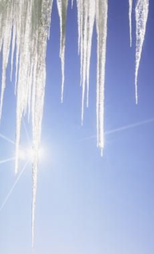 Cynthia, whose sister Sybil commit suicide, was a believer in spiritualism and the occult, and was convinced that the dead send messages to the living, sometimes through acrostics. After the narrator learns of Cynthia’s death, he become frantic, looking everywhere for signs that Cynthia is trying to influence him. He even searches for acrostics. In the end, he finds nothing and is relieved. Readers are too. Until we realize that the last paragraph contains an acrostic: a message from Sybil herself, telling us that she has been reaching out from beyond the grave to manipulate the narrator’s view of the world from the story’s very beginning. Yes, okay. It's a bit heavy. Perhaps I ought to end with a happier tale of the use of an acrostic. A love story. The Moth is a live storytelling event in which people share their true tales on stage in front of an audience. It’s available as a podcast and I listen to it from time to time, especially on road trips. One of the most memorable I’ve ever heard is Cynthia Riggs’ story “The Case of the Curious Codes”. In it, Cynthia describes how when she was 81, she received a mysterious package: an envelop full of cryptograms and a return address given in latitude and longitude. The sight of the cryptograms jogged Cynthia’s memory: at age 18, while working in a marine biology lab, she and a kindly colleague, Howard, used to swap them. He had kept them for 62 years. 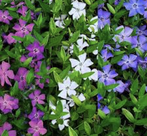 Correspondence ensued. The two caught up after so many decades, discovering all kinds of bizarre coincidences, and growing closer with every package. Eventually Cynthia, an avid gardener, received a package from Howard that contained seven seed packets arranged in the following order: hollyhocks, leeks, orka, vinca, eggplant, spinach, and catnip. H-LOVES-C. So having said all that, I suppose there's only one question left, dear reader. Have you figured out my acrostic?
Of all the wedding photos my friend, the extraordinarily talented Dallas Curow, has taken, there is one that I find particularly magical.
It’s a shot that was taken between shots, which is to say in a candid moment. The bride and groom are laughing uproariously at something we can’t see. On either side of them, guests turn their heads, searching for the source of that mirth, smiling the hesitant smiles of people who anticipate seeing something funny very shortly.
It’s the first time I’ve had a cryptic in print and I'm thrilled. It's especially cool to know that The Bookshelf in Guelph, which was my favourite hang-out in high school, will have copies. 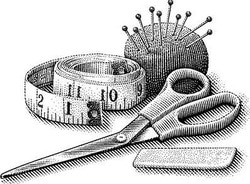 This is a special puzzle because it was custom made for the Summer 2017 issue of Montreal Review of Books. I absolutely love this publication, which exists to highlight the literature of English-language writers and publishers from Quebec, and I wanted the puzzle to reflect that. Six of the clues are personalized, including three clues that make reference to authors whose books are reviewed in this issue (one of the reviews was written by me). In just ten days, I'll have my first cryptic crossword in print and I couldn't be more excited. It's being published by Montreal Review of Books, which you can get all over Canada (see here for a list of places that carry it). I'm especially honoured given that this is the first time they've published a cryptic crossword before. 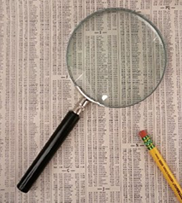 I hadn't really thought of it until my editor called to double-check a word in one of my clues, but proofreading a cryptic crossword puzzle must be really tricky. Clues can sound really weird even when they're right and even a perfectly symmetrical grid can have a structural error (which happened with The Globe and Mail a few months back). If you don't happen to solve cryptic crosswords, which my editor doesn't (yet), how do you proceed?  Blood Fall, Antarctica. (Photo credit: Peter Rejcek, NSF) Blood Fall, Antarctica. (Photo credit: Peter Rejcek, NSF) When BBC Travel posted a list of the world's most bizarre natural phenomena in August of last year, I read it with rapture. Did you know that there's a blood red waterfall in Antarctica? Or that in northern Canada there's a lake full of frozen bubbles? (Ironically, the bubbles are highly flammable)  Tell me if this sounds familiar. Every once in a while, when I'm solving a puzzle, the strangest feeling comes over me of being simultaneously in the driver’s seat of my thinking as I tackle a cryptic crossword and a powerless passenger as my brain conjures a word from goodness only knows where. Take the clue 17 Down on this Saturday’s Globe and Mail cryptic crossword: 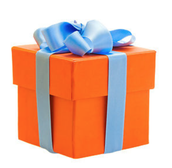 It’s my birthday! As a special present for myself, I carved out a little time every day of the last week and put together a cryptic crossword with personalized clues. A few weeks ago, I wrote about the momentum that good puzzles have and with this one, I’ve paid close attention to the difficulty level of each clue in the hopes that solvers will be pulled along. 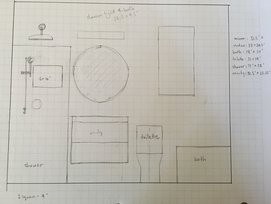 Figuring out how to fit everything into the small master bathroom. Figuring out how to fit everything into the small master bathroom. Have you ever renovated? We spent the entire fall in the throes of a major house reno. It was tons of fun, everything worked out well, and I learned a great deal. The most important lesson was the golden rule of construction: measure twice and cut once. This is smart advice to take literally but it's also a wise principle to apply more generally. Spend a lot of time planning. Review your work. There will be fewer mistakes and when surprises do crop up, you'll be better prepared to deal with them. Planning carefully is key to producing a good cryptic crossword puzzle, which is why I was so surprised this past Saturday when there was a mistake in Fraser Simpson's cryptic crossword in the Globe and Mail.
|
About Sarah
I'm a writer, adventurer, amateur setter of cryptic crosswords, lover of "ah-ha!" moments, and exhausted mom. Archives
November 2021
Categories
All
|
||||||||||||||